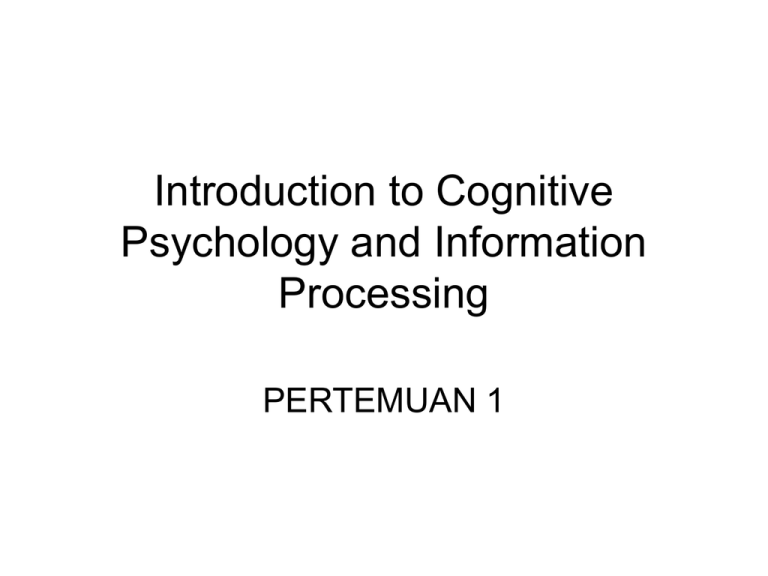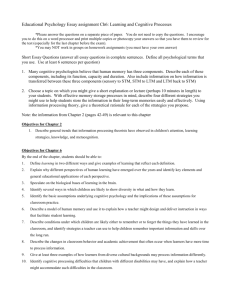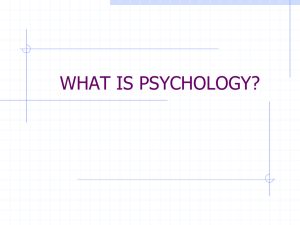Introduction to Cognitive Psychology and Information Processing PERTEMUAN 1
advertisement

Introduction to Cognitive Psychology and Information Processing PERTEMUAN 1 1.1 Cognitive processes A definition of cognitive psychology • the psychology of understanding and knowing • study of mental processes The main sequential stages of cognitive processing The three main methods of studying cognitive psychology 1.2 Experimental psychology The first cognitive psychologists • Wilhelm Wundt (1879), the first psychology laboratory was set up by at Leipzig. Wundt’s research: perception, visual illusions. • Hermann Ebbinghaus (1885), published the first experimental research on memory • William James (1890), published Principles of Psychology which proposed a number of theories; a theory distinguishing between short-term working memory and long-term storage memory. Gestalt and schema theories • Gestalt group (Gestalt is German for ‘shape’ or ‘form’), suggested that the perception of a whole object is more than just the sum of its component parts (Wertheimer, 1912, Kohler, 1925). • Bartlett (1932), The schema theory proposes that all new perceptual input is analysed by comparing it with items which are already in our memory store, such as shapes and sounds which are familiar from past experience. A shape recognised by most observers The generation of schemas for comparison with new input 1.3 Computer models of information processing • The computer analogy • Computer modelling of brain function – Selfridge and Neisser (1960) • feature detectors • The limited-capacity processor model The limited-capacity processor model • Broadbent (1958) carried out experiments on divided attention, which showed that people have difficulty in attending to two separate inputs at the same time. Sensory filter theory (Broadbent) Stimulus Sensory Register Sensory FILTER STM limited capacity Response LTM Basic Information Processing Stimulus Sensory Register STM (working Memory) LTM Response 1.4 Cognitive Neuropsychology • The structure and function of the brain • Neuropsychology is concerned with the relationship between brain function and cognition. 1.5 Minds, brains and computers • The brain as an information processing device • Top-down and bottom-up processing Top-down and bottom-up processing





